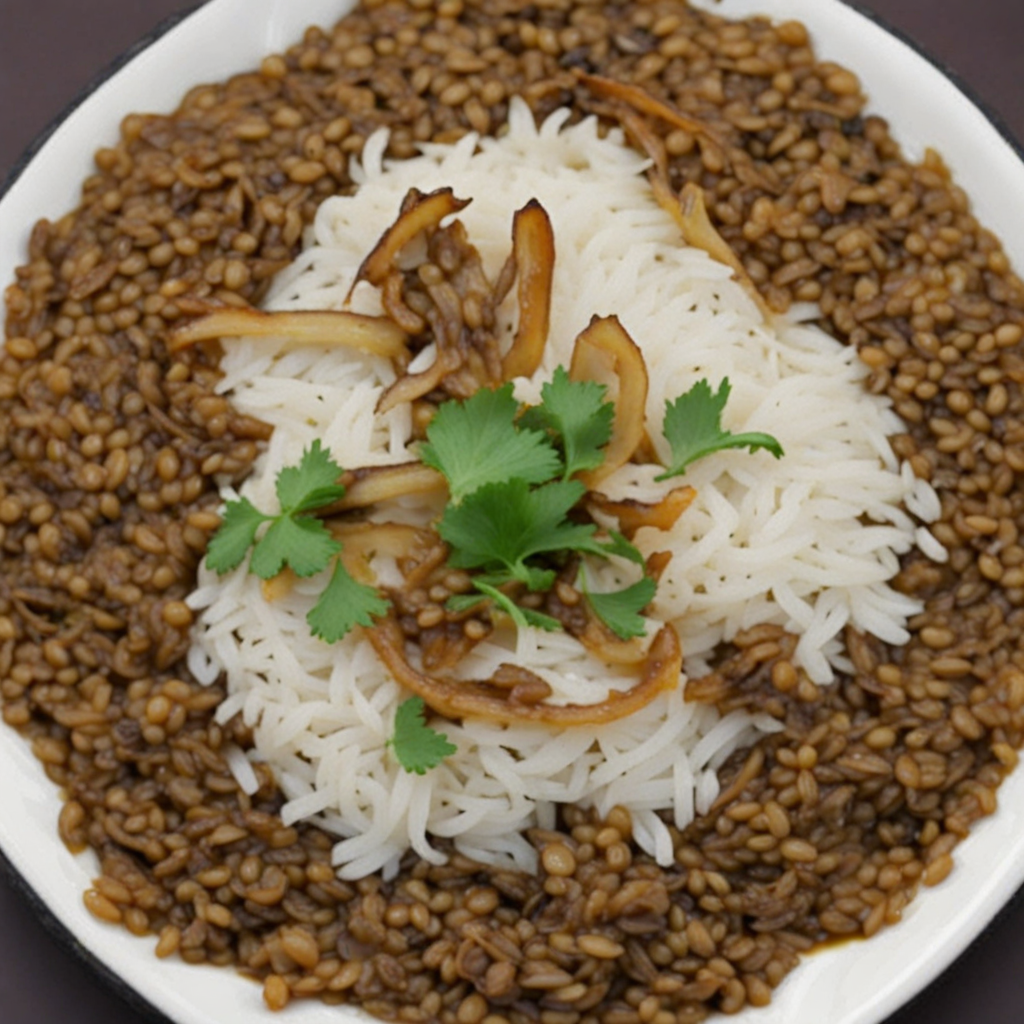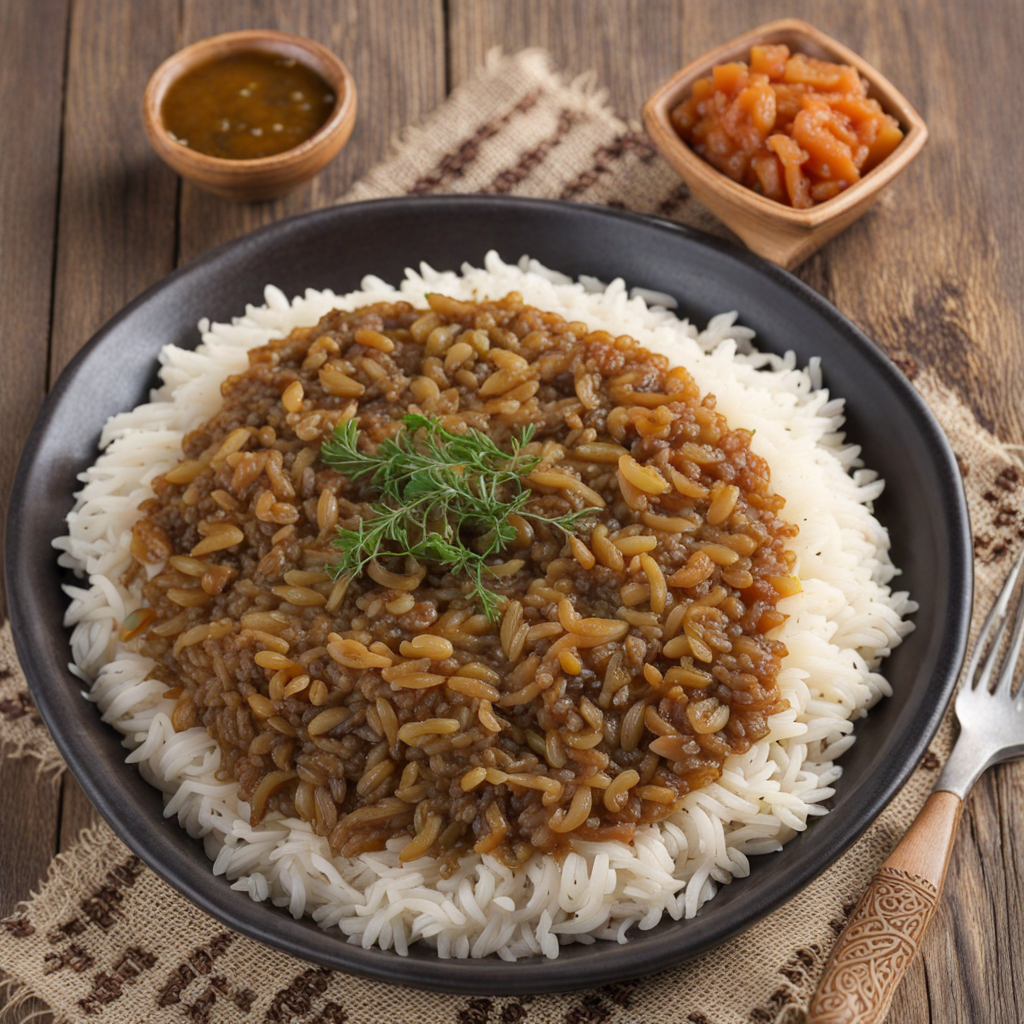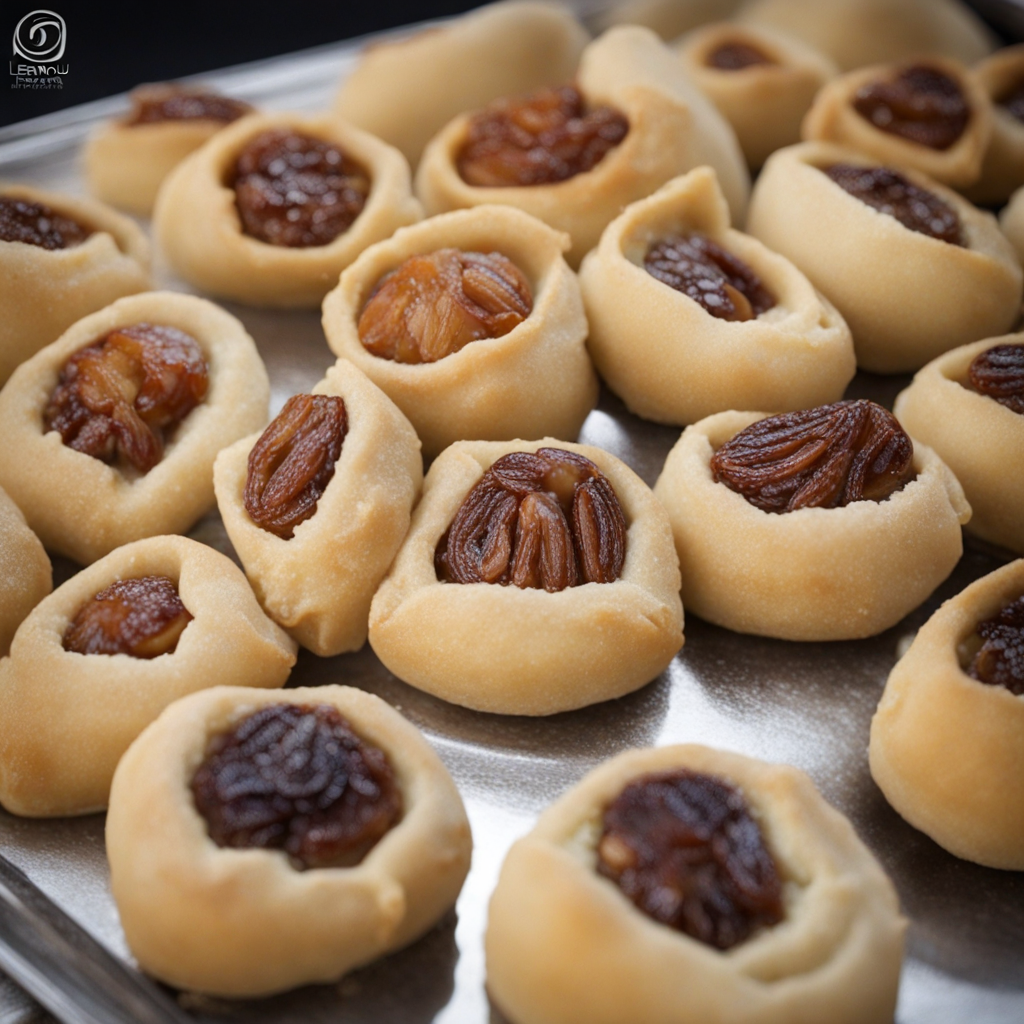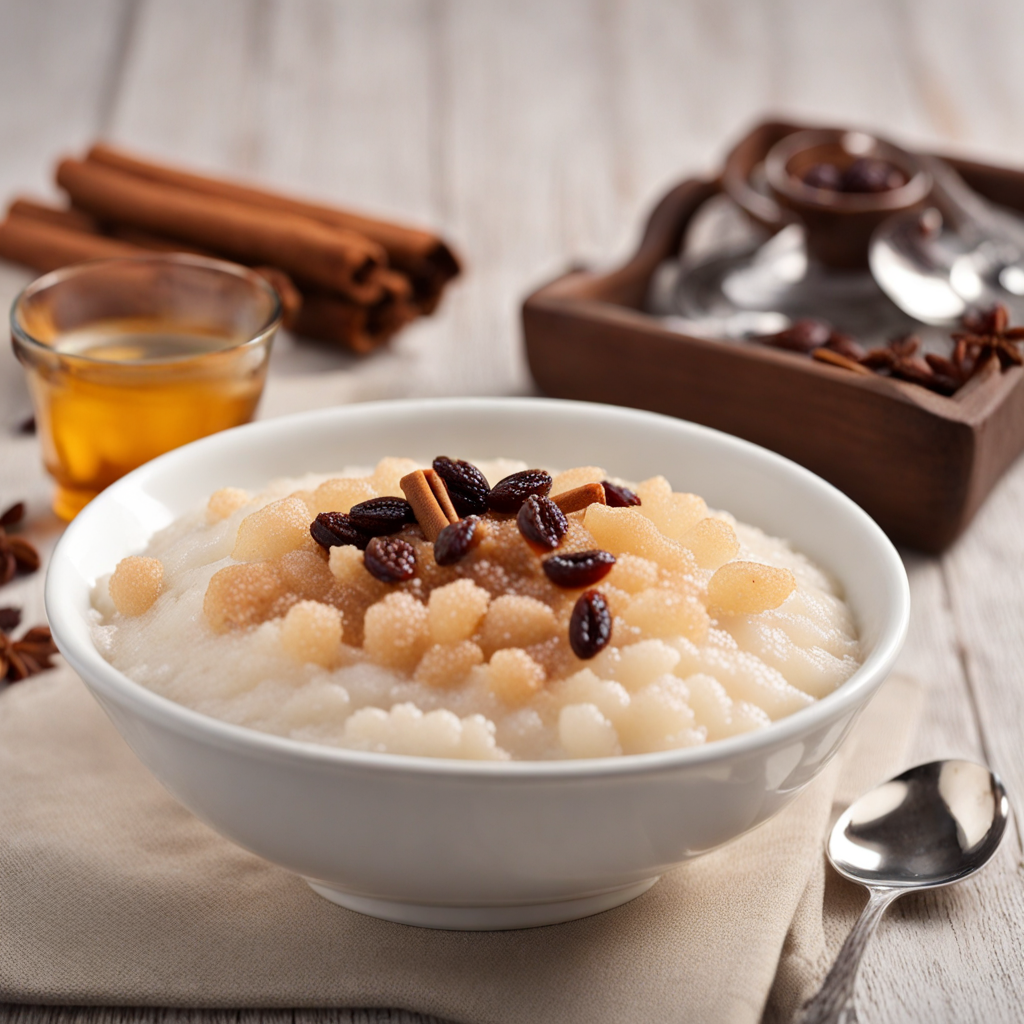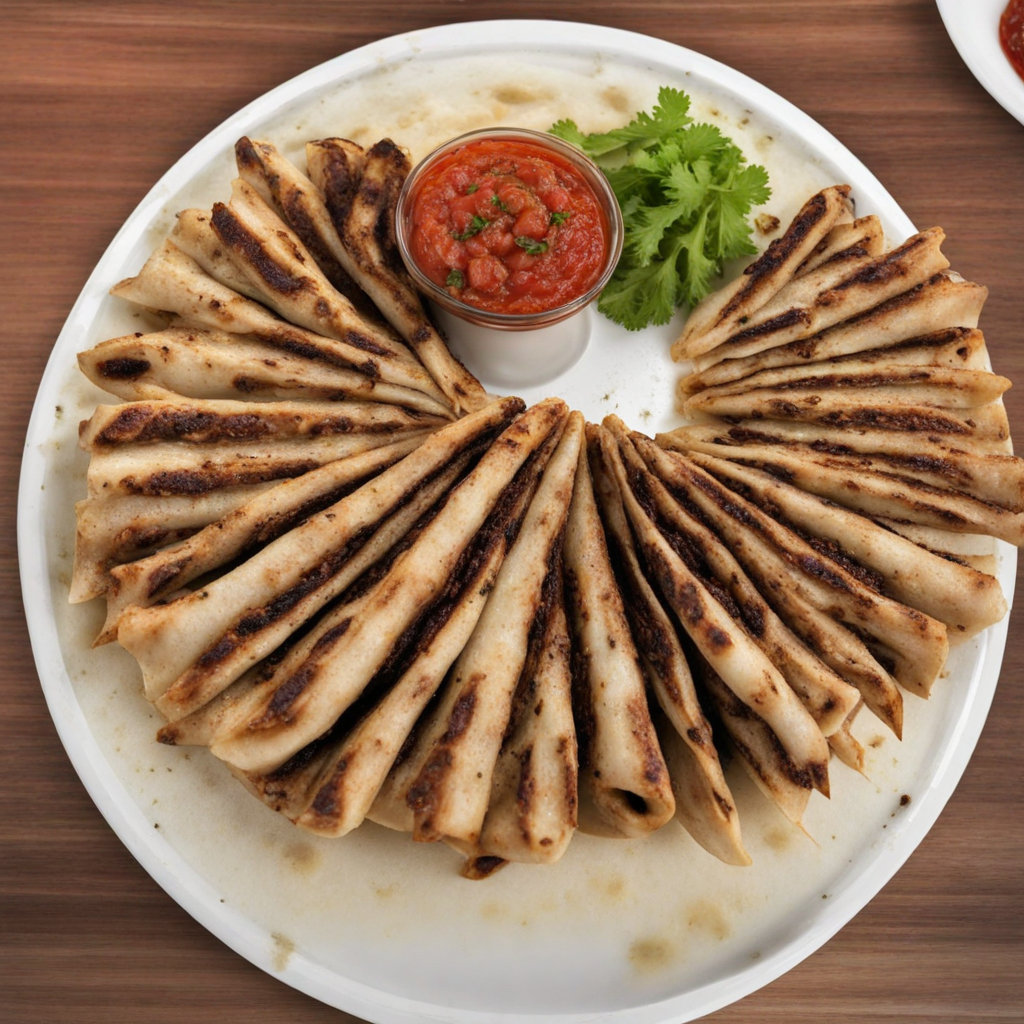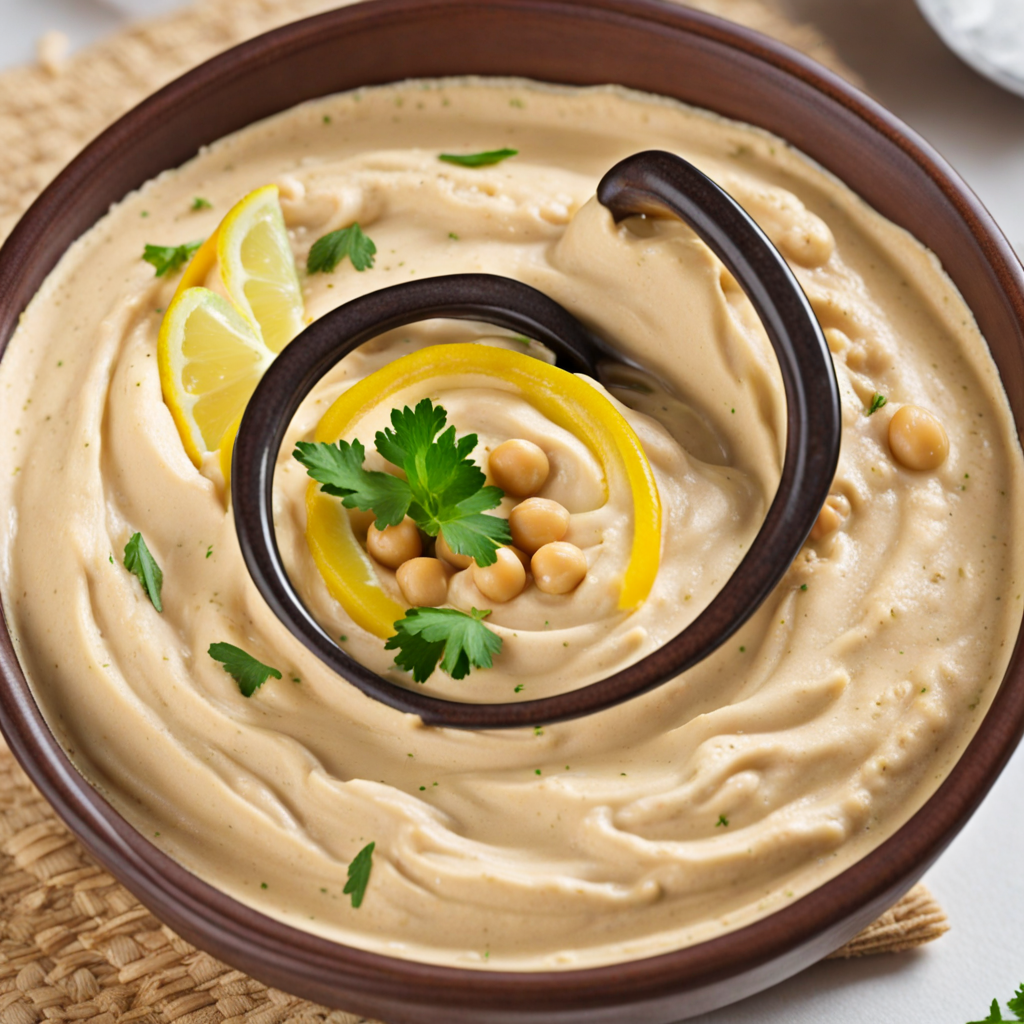Mujaddara
Mujaddara is a traditional Lebanese dish that beautifully combines the earthy flavors of lentils, fragrant rice, and caramelized onions. At its core, this hearty meal is made by cooking brown or green lentils with rice, often seasoned with a touch of cumin and salt. The lentils lend a rich, nutty flavor, while the rice provides a soft, delicate texture that balances the dish. This simple yet satisfying combination is a staple in Middle Eastern cuisine, celebrated for its wholesome and nourishing qualities. The crowning glory of Mujaddara is its lavish topping of caramelized onions. Slowly cooked until they become golden brown and sweet, these onions add a delightful contrast to the dish's savory base. The sweetness of the onions enhances the overall flavor profile, creating a harmonious blend that is both comforting and satisfying. The dish is often drizzled with a sprinkle of olive oil, which adds a fruity richness that elevates the dining experience. Mujaddara is not only delicious but also versatile. It can be served warm or at room temperature, making it perfect for any occasion. Often accompanied by a side of tangy yogurt or a fresh salad, it offers a delightful contrast that enhances its flavors. Whether enjoyed as a main course or a side dish, Mujaddara invites food lovers to explore the depths of Lebanese cuisine, showcasing how simple ingredients can come together to create something truly memorable.
How It Became This Dish
Origin of مجدرة مجدرة, a traditional dish from Lebanon, has roots that extend deep into the region's history, dating back to ancient times. Its primary ingredients—lentils, rice, and onions—are staples that have been cultivated and consumed throughout the Middle East for millennia. The name "مجدرة" is derived from the Arabic word "جَدَرَ," meaning "to be plentiful," which aptly describes the hearty nature of this dish. Lentils have been a significant source of nutrition since the dawn of agriculture, and archaeological evidence suggests they were among the first crops cultivated by humans. In ancient civilizations, such as those in Mesopotamia, lentils were a crucial part of the diet, valued for their protein content and ability to thrive in arid conditions. As trade routes expanded, the recipe for مجدرة likely spread beyond Lebanon, acquiring various regional adaptations while retaining its core essence. \n\n Cultural Significance In Lebanon, مجدرة holds a special place in the culinary landscape and is often associated with comfort and home-cooked meals. It is typically considered a humble dish, embodying the spirit of the Lebanese ethos of sharing and hospitality. The preparation of مجدرة can be seen as a communal activity, often made in large quantities to serve family and friends during gatherings and celebrations. The dish also carries cultural symbolism, often linked to the Christian fasting traditions in Lebanon, particularly during Lent. During this period, many Christians abstain from meat and dairy products, making مجدرة an ideal meal. Its nutritional balance, featuring lentils as a protein source and rice as a carbohydrate, provides sustenance while adhering to dietary restrictions. This connection to religious practices further solidifies its significance within Lebanese culture, transcending mere sustenance to become a symbol of communal identity and continuity. \n\n Regional Variations As مجدرة traveled across the Levant, it evolved, leading to various regional interpretations. In Syria, for instance, the dish may include different spices or garnishes, reflecting local tastes. In Palestine, it is often paired with a spicy tomato sauce or served with a side of salad. These variations provide insight into the culinary diversity of the region and highlight the adaptability of مجدرة as a dish that can cater to different palates. In addition to the basic ingredients, some modern interpretations of مجدرة incorporate additional vegetables, such as carrots or spinach, to enhance its nutritional profile and visual appeal. This adaptability continues to keep the dish relevant in contemporary cuisine, allowing it to find a place on tables both in traditional settings and modern restaurants. \n\n Preparation and Ingredients The classic preparation of مجدرة involves a simple yet flavorful process. The dish typically begins with cooking lentils until they are tender, followed by adding rice and water, allowing them to cook together. The crowning touch is the caramelized onions, which infuse the dish with a rich, sweet flavor that balances the earthiness of the lentils and the mildness of the rice. To enhance the dish further, spices such as cumin, coriander, and allspice are sometimes added, providing a warm, aromatic quality. The choice of spices can vary based on personal preference or regional traditions, showcasing the flexibility of مجدرة as a canvas for culinary creativity. \n\n Modern Adaptations In recent years, مجدرة has gained popularity beyond its traditional roots, finding its way onto menus in various international cuisines. As the global food scene becomes increasingly interconnected, dishes like مجدرة are celebrated for their simplicity, health benefits, and rich flavors. The rise of vegetarian and vegan diets has also contributed to its newfound popularity, as it is naturally plant-based and nutrient-dense. Restaurants that focus on Middle Eastern cuisine often highlight مجدرة as a featured dish, appealing to those seeking authentic flavors or healthy meal options. Additionally, the growing interest in ancient grains and legumes has positioned lentils and rice as trendy ingredients in contemporary cooking, further bolstering the dish's status. \n\n Global Influence and Recognition The spread of Lebanese cuisine worldwide has also led to an increased recognition of مجدرة as a staple dish. In countries with significant Lebanese diaspora, such as the United States, Canada, and Australia, مجدرة is frequently served at cultural festivals, family gatherings, and communal events, serving as a bridge to heritage and tradition for many. Culinary enthusiasts and food bloggers have also played a role in promoting مجدرة, sharing recipes and stories about its cultural significance. As a result, it has earned a place in the hearts of many beyond the Middle East, inspiring adaptations that retain the dish's fundamental character while embracing local ingredients. \n\n Conclusion: A Culinary Legacy The history of مجدرة is a testament to the enduring nature of food as a cultural connector. Rooted in the fertile lands of the Levant, it has traveled through time and geography, adapting and evolving while remaining deeply tied to the identity of the Lebanese people. It is a dish that embodies the essence of community, hospitality, and tradition, making it a cherished part of Lebanese heritage. As مجدرة continues to capture the hearts and palates of people around the world, it stands as a reminder of the power of food to transcend borders and unite cultures. Whether served in a family home in Beirut or a trendy restaurant in New York, مجدرة remains a flavorful symbol of resilience, adaptability, and shared history.
You may like
Discover local flavors from Lebanon


